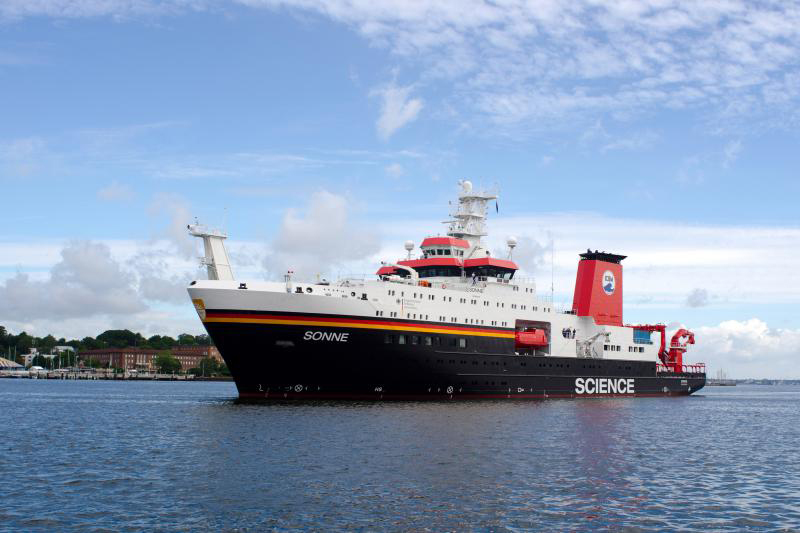SONNE SO314
- Area:
- Subtropcial South-East Pacific
- Time:
-
13.08.2025 - 01.10.2025
- Institution:
- GEOMAR
- Chief scientist:
- Martin Frank
Central challenges in understanding the earth system are the characterization of temporal aspects of ocean crust production and the quantification climate-solid Earth feedbacks. Time series are the integrating link for the different disciplines of Earth sciences and thus serve as a powerful tool to address these questions. One important time series is the climate (sea level) record that documents transitions between ice ages and warm periods, involving vast mass transfer between continents (ice load) and oceans. Modeling results suggest that mid-ocean ridge (MOR) volcanism (crustal thickness, lava chemistry and hydrothermal activity) is sensitive to such pressure changes and thus was influenced by changes in sea level, but this remains to be proven, primarily due to the difficulties in obtaining MOR time series. Because of their key role in Earth system sciences, time series are the central element of the ERC Synergy Project T-SECTOR, which aims to obtain geochemical, geophysical, and paleo-oceanographic time series on MOR systems.
During RV SONNE cruise SO314 (Papeete - Antofagasta) we will establish time series of crustal thickness, magma chemistry and hydrothermal activity of the past 1.5 Myr at the fast-spreading South East Pacific Rise (SEPR), the most magmatically active portion of the MOR system. Through closely spaced gravity coring (perpendicular to the ridge axis on both sides of the ridge), a high-resolution time series of variations in mantle melting (as reflected by the chemistry of volcanic glasses preserved in the sediments) and hydrothermal activity (deduced from the geochemical composition of the metals deposited in the sediments) can be obtained, while seismic techniques will be used to determine variations in crustal thickness over time. Integration of these unprecedented 1.5 Myr time series will allow us to characterize the temporal evolution of ocean crust production at a fast-spreading MOR and to test the controversial link between climate (glacial cycles) and solid-Earth (ocean crust generation) processes.



